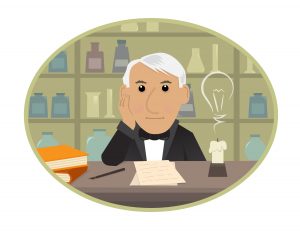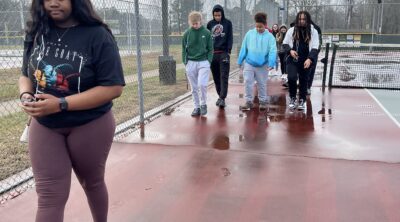While year-round schools have been in full swing for more than a month, schools following a traditional calendar are just kicking off! And so is this new blog series, Teacher Tools. In this and posts to follow, we’ll share some of our favorite classroom “tools” with our adopters. The first of these? Graphic organizers!
Because graphic organizers are visual displays, they help students (and not just visual learners!) to see relationships among various forms of information. There are all sorts of graphic organizers. They can guide students in classifying concepts, studying, and in even in communicating effectively. Graphic organizers are great tools for writing, from brainstorming to researching to organizing ideas! Best of all, graphic organizers can not only be easily incorporated in conjunction with The Walking Classroom. They are also applicable outside of use with the program!
Building on Biographies
 One spot to introduce the use of graphic organizers would be with one of the many biographies presented in the podcasts. It doesn’t matter whether the whole class is listening to the same podcast or you have assigned a different podcast to several small groups. In either case, using a biography graphic organizer is a good way to help students summarize the life stories of famous folks.
One spot to introduce the use of graphic organizers would be with one of the many biographies presented in the podcasts. It doesn’t matter whether the whole class is listening to the same podcast or you have assigned a different podcast to several small groups. In either case, using a biography graphic organizer is a good way to help students summarize the life stories of famous folks.
In fact, it might be interesting to focus on specific groups of individuals. Use one graphic organizer for details on the individual, then compare two (using a Venn Diagram) or the whole group (using a table!). There are a number of “themed” biographical podcasts from which to pick.
Medical Minds
- Dr. Charles Drew (4-#13)
- Dr. Elizabeth Blackwell (4-#15)
- Dr. Daniel Hale Williams (4-#19)
- Dr. Christiaan Barnard (4-#20)
Poetic People
- Langston Hughes (4-#16)
- Maya Angelou (4-#17)
- Robert Frost (4-#23)
- Carl Sandburg (4-#24)
- Emily Dickinson (4-#38)
- Jack Prelutsky (4-#39)
- Ogden Nash (4-#40)
Innovators
- Thomas Edison (5-#16, STEM-#9)
- Albert Einstein (5-#17, STEM-#10)
- Johannes Gutenberg (5-#23)
- Galileo Galilei (5-#24, STEM-#5)
- Leonardo DaVinci (5-#26, STEM-#4)
- Benjamin Banneker (5-#28, STEM-#7)
- George Washington Carver (5-#29, STEM-#35)
Explorers
- Marco Polo (5-#78)
- Christopher Columbus (5-#79)
- Pedro Alvarez Cabral (5-#80)
- Vasco da Gama (5-#81)
- Neil Armstrong (5-#82)
Or expand the students’ knowledge of an individual beyond the podcast, introducing a literary link, then having them complete a biography book report!
Sorting Science Concepts
 Making sense of science concepts is a cinch . . . especially when you bring a graphic organizer into the picture. In fact, there are a number of science-specific graphic organizers all in one resource for you to explore.
Making sense of science concepts is a cinch . . . especially when you bring a graphic organizer into the picture. In fact, there are a number of science-specific graphic organizers all in one resource for you to explore.
Why not listen to two scientist podcasts and use “Comparing Scientists” to see how they are alike and different? The “Sightseeing” sample would be a nice follow-up to some of the environmental podcasts, like Conservation (5-#7, STEM-#36) or Marine Life (5-#76, STEM-#34). Or introduce “Taxonomy Organizer” for some classification practice after Animal Classification (4-#41, STEM-#32).
Use “Rock Hunting” to extend your discussion of The Rock Cycle (4-#75, STEM-#17) or “This Week’s Weather” to dive deeper into Meteorology (5-#11, STEM-#11)! Are your students struggling with scientific terminology? Try “New Word” or “Meeting a New Word” when introducing new vocabulary around any of your science topics!
Explore the possibilities! There are even more graphic organizers useful for science topics (and beyond)!
And There’s More . . .
From walking logs to summarizing the content of specific podcasts, we’ve seen some innovative applications of graphic organizers from our adopters. The ideas absolutely abound! Be on the lookout for future posts in this series, to learn more about graphic organizers and other helpful teacher tools!






Leave a Reply